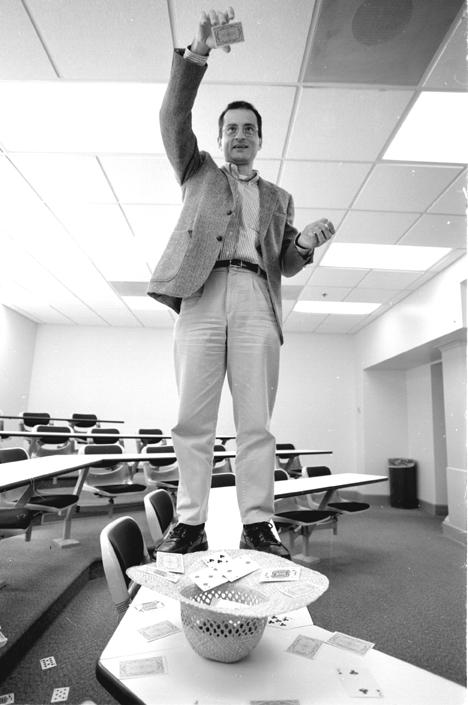A Bar Trick
In a certain lucrative bar trick, a naive bystander is asked to try to
drop a playing card into a hat at his feet. The idea is demonstrated to him
by the crafty challenger, who holds the card vertically and drops it over
the hat. Each time the bystander drops the card in this manner, it flutters
wildly in some apparently random direction and completely misses the
hat. The challenger bets that he can hit the hat with just one drop. Bets
are placed. The challenger then steps up and drops the card with a
horizontal initial orientation, and it falls obediently into the hat.
This simple trick illustrates several fundamental aspects of the
dynamics of a falling thin plate. First, as shown by the behavior of the
card when dropped vertically, the motion of such an object can be very
chaotic. Here, one of the key features of chaotic dynamics---a severe
sensitivity to the precise initial conditions---is what makes the scheme
unprofitable for the bystander. Second, the severity of this dependence
can itself be a function of the value of the initial condition. Thus, a
card dropped with an initially horizontal orientation remains nearly so;
for vertical distances typical for this trick, initially different
trajectories diverge only slightly, reaping the challenger his profit.
|

|

